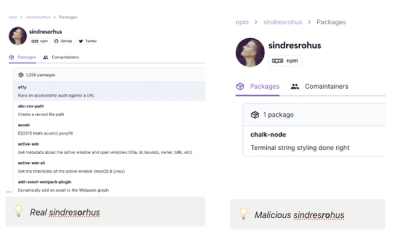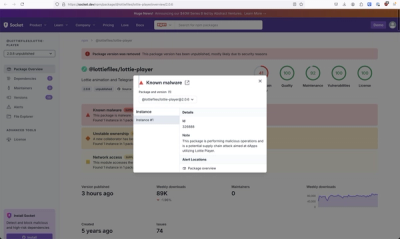REM






Rapid Eye Movement (REM) : A dead-simple REST API framework for NodeJS. Now go back to sleep, you were having a good dream.
This library is not yet fit for production use, but is steadily marching in that direction. It is being developed to support WellDone's management and data analytics portal. Want to help out? Contact me or just dive in.
Currently, only NeDB and a subset of MongoDB are supported backend engines, but more will be introduced soon.
##Installation
Prerequisites:
Install your favorite database, currently supported:
- NeDB for local data storage
- MongoDB for more robust, production-grade use cases
- More coming soon, including various flavors of SQL by way of knex!
Now, install remjs via npm
npm install remjs
##Basic Usage
A simple example using the REM.serve utility function and NeDB for local data storage
var REM = require('remjs');
var options = {
dataDirectory: "./data/simple_example",
version: "1.0",
resources: {
'employees': {},
'departments': {
children: ['employees']
}
}
}
REM.serve( options );
That's it!
The important part is the options hash, which supports the following (REM.Server and REM.serve extensions excluded):
- version : The version to expose at
/_version, useful if you're serving multiple REM versions. - engine : The database engine to use. This should be a hash with a MongoDB-style accessor object for each resource.
- resources : This is the meat and potatoes of the whole meal. Each key in the resources has becomes a REST API collection, and there are various options you can specify for each one (more details forthcoming)
Try it!
git clone https://github.com/amcgee/remjs.git
cd remjs
npm install
node examples/simple_example.js
Now, you can interact with your new API however you please. The following examples assume cURL, jq for JSON parsing, and basic linux terminal familiarity.
First, get the list of available resources at _help
curl http://localhost:3000/api/_help | jq '.'
[
"employees",
"departments"
]
Now, try getting the entire collection at /departments (it's empty)
curl http://localhost:3000/api/departments | jq '.'
[]
Ok, now let's POST a new department to that resource. (Your _id will be different)
curl -H "Content-Type: application/json" -d '{"name":"TPSReportDepartment","purpose":"NONE"}' \
http://localhost:3000/api/departments | jq '.'
{
"name": "TPSReportDepartment",
"purpose": "NONE",
"_id": "9QWrPtnkK63Hb0WF"
}
Great, now let's make sure it showed up.
curl http://localhost:3000/api/departments | jq '.'
[
{
"name": "TPSReportDepartment",
"purpose": "NONE",
"_id": "9QWrPtnkK63Hb0WF"
}
]
OK, now let's save off the new department's ID (or you could do this manually).
DPTID=`curl http://localhost:3000/api/departments | jq '.[0]._id' | sed -e 's/^"//' -e 's/"$//'`
Use that ID to get the individual department
curl http://localhost:3000/api/departments/$DPTID | jq '.'
{
"name": "TPSReportDepartment",
"purpose": "NONE",
"_id": "9QWrPtnkK63Hb0WF"
}
Get the list of employees in the new department (currently empty)
curl http://localhost:3000/api/departments/$DPTID/employees | jq '.'
[]
Make it not empty.
curl -H "Content-Type: application/json" -d '{"name":"Joe Schmoe","salary":250}' \
http://localhost:3000/api/departments/$DPTID/employees | jq '.'
{
"departments_id": "9QWrPtnkK63Hb0WF",
"name": "Joe Schmoe",
"salary": 250,
"_id": "tGmX6t8G6rha8ma4"
}
Get the non-empty list.
curl http://localhost:3000/api/departments/$DPTID/employees | jq '.'
[
{
"departments_id": "9QWrPtnkK63Hb0WF",
"name": "Joe Schmoe",
"salary": 250,
"_id": "tGmX6t8G6rha8ma4"
}
]
Profit.
Resources
At the heart of any REM configuration is a set of resources. These are effectively the top-level collections in the data model. Available REM options (which can also be specified at the top REM options level and will be inherited by sub-collections) are:
engine: The backend database engineid_key: (partial support only) Specify the property to use as the canonical ID reference for this resource. Default: _id, changing this may break things.private: If set to true, this resoure will not be exposed at this location by the REST API. The resource could still be exposed as a child or another resource, or used as an authentication user store.children: The children of a particular resource. This is effectively a has-many relationship.forbid: The actions to forbid on this resource. For instance, you can specify fobid: ['post'] on a top-level resource to prevent users from POST-ing without going through a parent object (i.e. you can only create new employees within a department)filter: The base filter to apply to all queries to the backend DB.defaults: The default values to use when generating new documents within this resource.immutable_keys: The set of keys that cannot be set or modified by an API user. This can be useful when used in combination with defaultsmakeForeignKey: A function used to name foreign-key properties that point to this resource. Default: function(target) { return target + "_id" }
Modifiers
The following can be added to the query string of a URL to modify or limit the results. They modify the resulting database query, so the server doesn't need to do the processing.
fields
Return only certain fields in the response. This is a comma-delimeted list
For instance, only include the employee names with fields=name
GET /employees?fields=name
Or the name and salary of a particular employee with fields=name,salary
GET /employees/<id>?fields=name,salary
NOTE: the id is also stripped by default, to include it add _id as a field parameter
sort
Sort the results by the fields listed in the comma-delimited sort perameter. Pre-pend a - to the field name to sort in reverse order.
The database engine determines the sorting heuristics.
Sort by salary (ascending), then by title (descending)
GET /employees?sort=salary,-title
limit
Only return the first N results with ?limit=N, useful for pagination.
i.e. get the top 3 highest-paid employees
GET /employees?sort=-salary&limit=3
skip
Skip the first N results with ?skip=N, useful for pagination.
i.e. return the fourth, fifth, and sixth highest-paid employees
GET /employees?sort=-salary&limit=3&skip=3
##Authentication
REM can easily be configured to perform user authentication and session management (using JSON Web Tokens, so no actual session state is needed on the server). To enable authentication, simply supply an authentication property to your REM options.
var REM = require('../');
var options = {
dataDirectory: "./data/authentication_example",
version: "1.0",
authentication: {
annonymous_signup: true,
login_authority: {
resource: 'employees'
}
},
resources: {
'employees': {},
'departments': {
children: ['employees']
}
}
}
REM.serve( options );
In this example, we specify employees as the authentication login authority. This allows employees to log in (assuming they've been added to the login system correctly, see signup below). In this example we also allow anyone to sign up as an employee, which probably isn't a good way to run a business.
Annonymous access
Once authentication has been configured, un-authenticated users will always receive an HTTP 401 error when accessing any REM resource. The two notable exceptions are the login and signup endpoints described in the following sections.
Login
Assuming a user has been created and a password assigned, logging in is simple.
curl -d '{"login": "joseph","password": "MyP4SSW0RD!"}' http://localhost:3000/_login
If authentication fails because the login or password are incorrect, the REM server replies with an HTTP 400 error. If it succeeds, the server replies with an HTTP 200 OK and the body of the response is the new JSON Web Token which can be used to make authenticated requests. A JSON web token looks like a bunch of random text:
eyJ0eXAiOiJKV1QiLCJhbGciOiJIUzI1NiJ9.eyJpZCI6eyJ1c2VybmFtZSI6ImF1c3RpbiIsIl9pZC
I6InNBajBzbnIzaHF3MjNob0oifSwiaWF0IjoxNDE2ODc1MDEwLjc5OCwiZXhwIjoxNDE2ODc2ODEwL
jc5OH0.18gIxEhLpBuLnkiwBJbAWpEb-uQesH1E5q0dBa35Hqo
but it encodes the following:
- The identity of the logged-in user
- An expiration time for the token (enforced server-side)
###Authenticated Requests
To make authenticated requests, include the JWT token as a Bearer token in the Authorization HTTP header, like so (assuming the token has been saved in the TOKEN environment variable):
curl -H "Authorization:Bearer $TOKEN" http://localhost:3000/departments
###Signup
If options.authentication.annonymous_signup is set to true, REM will allow unauthenticated POST requests to signup_path (/_signup by default) to create new user accounts. There is currently no spam protection or rate limiting on this endpoint, so use annonymous_signup with caution.
###/Me
Once a user has authenticated, the underlying user resource is exposed via the /me shortcut path. This is a direct alias to the user resource, so if login_authority.resource is users and the logged-in user has ID Om77wPVRTJWZSjNf, the /me will return the same result as /users/Om77wPVRTJWZSjNf.
Additionally, the following actions are available under the /me namespace:
POST /me/_password: Change the current user's password. Requires a JSON-formatted body with old_password and new_password specified. Return 200 OK on success.DELETE /me/_password: Reset the current user's password to something random. Requires a JSON-formatted body with old_password specified. Returns 200 OK with the user's newly-generated password as the response body.
###Authentication Options
The following are options available in the options.authentication object:
var rem_options = {
authentication: {
login_path: '/_login',
signup_path: '/_signup',
me_path: '/me',
annonymous_signup: false,
login_authority: {
type: 'basic',
resource: 'users',
login_property: 'username',
auth_property: '_auth',
},
password_min_length: 6,
password_key_length: 64,
password_salt_size: 64,
password_pbkdf2_iterations: 10000,
token_expiration_minutes: 30,
jwt_secret: 'THISISATOPSECRETVALUETHATSHOULDBEUNGUESSABLEANDNEVERSHARED'
}
...
})
login_path: The path at which to listen for logins. Default: /_loginsignup_path: The path at which to listen for new signups. Does nothing if annonymous_signup is not set to true. Default: /_signupme_path: The path at which to expose data about the currently logged in user. Default: /meannonymous_signup: set to true if annonymous users are allowed to create new accounts by posting a login and password to the signup_path. Default: falselogin_authority.resource: The resource to use as the user store. It must already exist. Default: userslogin_authority.login_property: The property of the login authority resource to use when looking up login names. Must be unique. Default: usernamelogin_authority.type: The type of login authority. Currently, the only available type is basic, also the default.login_authority.auth_property: The property of the login authority resource to use when storing sensitive login information (namely the encrypted password, password salt, and number of pbkdf2 iterations. Must begin with an _ so it is never exposed by the API itself. Default: _authpassword_min_length: The minimum character length of new passwords. Default: 6password_key_length: (ADVANCED) The size to use when generating an encrypted password using pbkdf2. Default: 64password_salt_size: (ADVANCED) The size to use when generating a password salt to use during pbkdf2 encryption. Default: 64password_pbkdf2_iterations: (ADVANCED) The number of iterations to use when generating an encrypted password using pbkdf2. Default: 10000token_expiration_minutes: (ADVANCED) The lifespan of authentication tokens. Once a token has been issued, it will remain valid (meaning whoever presents that token will successfully authenticate as that user) for some number (token_expiration_minutes) of minutes. Default: 30jwt_secret: (ADVANCED) The secret used to encrypt and decrypt JWT tokens. By default this is a randomly generated string (which is secure but doesn't allow for horizontal scaling or token validity across server restarts).
#Utilities
##REM Server
There is a simple Express server at REM.Server, a sample of its usage can be found in the examples directory. The REMServer constructor takes a normal REM options object, but with the following additions:
- port may be specified to indicate where the server should do its thing. Defaults to process.env['PORT'] or 3000
- baseURL the base URL at which the express server should do its thing. Defaults to '/'
The following API methods are available on a REMServer object:
- start: Start the server (returns itself for chaining purposes)
- stop: Stop the server
REM.serve
To make things even more dead-simple, you can create and start a REMServer in one go by calling REM.serve(options). options is a REMServer options object with one addition:
- dataDirectory: If specified,
options.engine is no longer required and the server will automatically create local NeDB databases for you in the directory provided. See the examples for use of REM.serve.
#Other fun stuff
##Contributing
Contributions are welcome. This is still an early prototype, so there's a lot to do.
Tests
Any new features should be testable, and the existing tests should pass.
Run npm test to be sure everything is working.
##License
MIT




